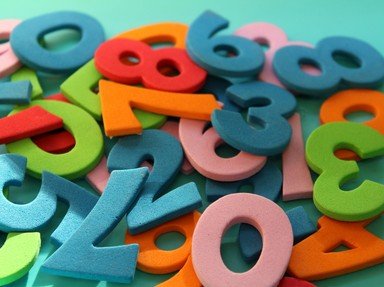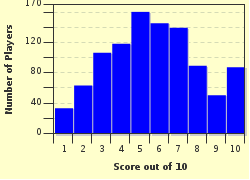Quiz Answer Key and Fun Facts
1. One of nature's most beautiful sights is that of a rainbow. As long as there are water droplets in the air, a rainbow can appear. You know there is much debate as to whether there are seven colors in a rainbow, or if there are only six. But tell me, scientifically, how many colors ARE in the rainbow?
2. You look up into the beautiful night sky and see dozens of constellations. One of them is Taurus. You recognize the Pleiades star cluster. The common name for this involves a number. What number is this?
3. As you are staring up into the night sky, you see Ursa Major. You know that the Big Dipper is part of Ursa Major. The Big Dipper is made up of the brightest stars of Ursa Major. My question to you is: how many main stars does the Big Dipper contain?
4. These are not exactly found in the sky, but most of them have been known to come from the sky. How many elements of nature are there? And no, I do not mean the Periodic Table of Elements.
5. There are a total of 27 moons of Uranus. However, these moons are divided into three groups. How many major moons does Uranus have?
6. We know that Earth is the third rock from the sun, and Mercury is the first. But what rank does Saturn hold?
7. In 2006, when Pluto was re-classified as a dwarf planet, how many dwarf planets were recognized in our solar system?
8. When talking about the diameter of the planets, the Sun is 9.7 times bigger around than Jupiter. In other words, if you could unwrap Jupiter and place it on the sun as a flat surface, it would take almost ten Jupiters to make one complete "circle" around the largest part of the sun.
It would take two of Mars to wrap around the Earth, nearly ten Earths to wrap around Saturn, and two and a half of Neptune to wrap around Saturn. With this in mind, how many of Mars would be needed to wrap around Neptune?
9. Ok, so maybe this is not in the sky, exactly, but it does relate to the sky in some way. And besides, you may see it above you. If you are in Australia, and you look up on a flag pole, how many stars might you see on the national flag?
10. Many people probably know what their "sign" is in astrology. But what about the houses that each sign rules? What is the number of the house that Virgo rules?
Source: Author
salami_swami
This quiz was reviewed by FunTrivia editor
Pagiedamon before going online.
Any errors found in FunTrivia content are routinely corrected through our feedback system.


